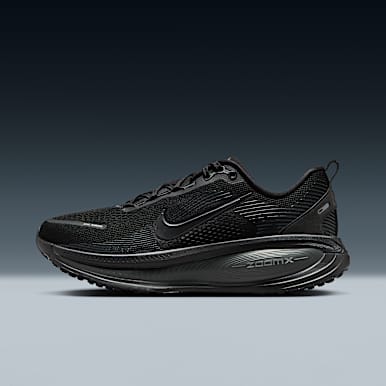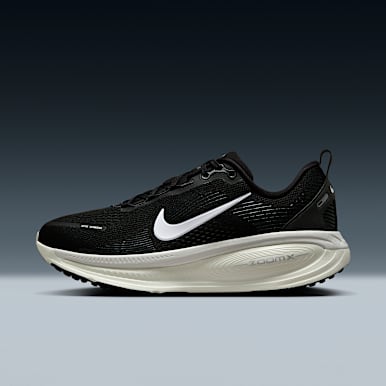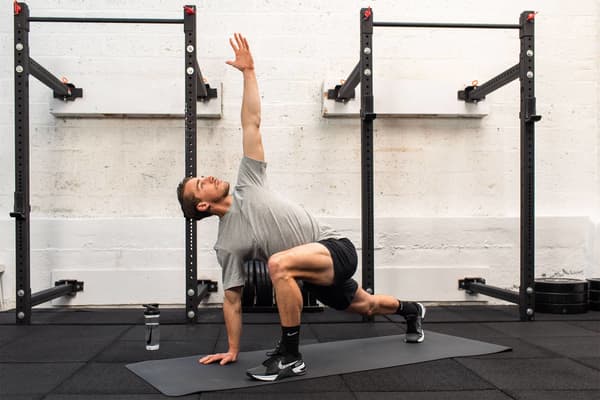Should you do cardio before or after weight training?
Sport & activity
Here's what the experts have to say about this hotly debated topic.

Workouts that feature both aerobic exercise (cardio) and resistance training (strength work) can be an efficient way to target multiple muscle groups all in one sweat sesh. Plus, switching up modalities mid-session can keep things interesting and help keep you motivated. But the question is, should you do cardio before or after lifting weights?
Or should you try what's called a two-a-day workout? This is where you do a full workout in the earlier part of the day and then another full workout later in the day. Whether or not this is doable for you would largely depend on other factors, such as your schedule and exercise preferences.
Perhaps the most suitable option might be to do strength training and cardio workouts on alternate days. However you fit these workouts into your schedule, it's important that you engage in both on a regular basis.
(Related: Everything you need to know about compound exercises)

Why you need cardio and resistance training
Aerobic exercise improves cardiorespiratory fitness, which is the ability of your heart and lungs to send oxygen to your muscles for energy. Resistance training, on the other hand, helps to build muscle mass and improve strength. This type of exercise also puts good stress on bones, helping to prevent bone loss, as well as build stronger and denser bones.
When both aerobic exercise and resistance training are performed as part of a regular exercise programme, they can help prevent chronic disease, such as some cancers, type 2 diabetes, cardiovascular disease, depression and dementia.
For context, the physical activity recommendation for aerobic exercise is 150–300 minutes per week of moderate-intensity activity or 75–150 minutes per week of moderate to vigorous physical activity. While for resistance exercise, it's two days per week, targeting all major muscle groups.
In fact, research published in a 2022 issue of the British Journal of Sports Medicine found that meeting the physical activity recommendations for both aerobic exercise and resistance exercise is associated with up to a 41 percent lower risk of dying from any cause—compared with sedentary adults.
In contrast, weightlifting alone was associated with just a 9 percent lower risk of all-cause mortality, while doing only aerobic exercise decreased the risk of dying by 32 percent. This data suggests engaging in a combination of both aerobic and anaerobic exercise may be the most effective way to fend off chronic disease and promote longevity, rather than exclusively doing just one.
Examples of aerobic training include:
- Power walking
- Cycling
- Jogging and running
- Playing tennis or basketball
- Hiking
Examples of strength workouts include:
- Bodyweight exercises
- Lifting weights
- Using resistance bands
- Using weight machines

Should I do cardio before or after weights?
"If you're combining the two into one session, generally speaking, lift first and do cardio second", said Enja Schenck, MS, CSCS. She explained that aerobic conditioning before strength training has been shown to have a negative impact on strength gains, but not vice versa.
Chris Travis, NASM, CPT concurred. "The majority of the time, doing cardio after weights will be more beneficial than a cardio-first approach", he said.
That's because cardio—a run, indoor cycling, HIIT or circuit work—increases your heart and respiratory rate and, simply put, can be quite tiring.
"You don't want your body to be fatigued while heading into resistance training", Travis said.
He explained that a cardio-first approach may hinder muscle power and compromise performance. Some research has shown that doing strength work prior to endurance training allows you to lift heavier weights (thus improving strength over time) compared with doing cardio before strength work. That same research also concluded that when strength training was done before cardio, it did not impair the ability to improve cardiorespiratory fitness.
Lifting while feeling fatigued may negatively affect proper form and increase the risk of injury.
"I caution people against doing lots of cardio first", Travis said. Resistance training is strenuous on your muscles. "Ideally, you shouldn't go into strength work already fatigued, so it's a good idea to prioritise resistance exercise", he added.

When your goal is to build strength
If getting stronger is your primary goal, Schenck recommended doing cardio and resistance training on different days. There's research that shows that keeping them separate has its own set of benefits.
One meta-analysis, found in a 2021 issue of Sports Medicine, discovered that while doing both cardio and strength work in a single session did not interfere with muscle growth or improvements in strength, it did reduce measures of explosive strength. This refers to our ability to produce force or power. For context, the Squat Jump and Leg Press were used in the study to measure explosive strength. If a specific workout prioritises these types of moves, then you may choose to do these moves on their own for the day without any cardio conditioning.
(Related: The reason your squats aren't growing your glutes—and how to fix it)
Additional research also found that doing strength training and cardio on different days (compared with when they're done together in the same session) was associated with a greater increase in fat loss, which is important in helping to prevent heart and metabolic disease.
"Ideally, separate the two by at least 24 hours", Schenck said. This will give your body proper time to recover. Separating these workouts can help you conserve energy during each session, too. Think about it: If you do both workouts in one go, you may feel great during the strength portion but tired during the cardio part.
On days when doing both cardio and resistance training makes the most sense for you, these tweaks can make each workout more effective. But make sure you prioritise recovery, too. It's important to listen to your body rather than push yourself too hard. You will not lose all of your strength or endurance gains just because you've skipped a workout or two.
- Separate each workout. If you're doing two separate workouts a day, some research shows that you need at least six hours of recovery between the two workouts. That said, having 24 hours of recovery is better in terms of improving strength, power and V02 max (an indicator of aerobic fitness and endurance) compared with back-to-back sessions or six hours in between, the research concluded.
- "If you do strength in the morning, keep cardio to a low-to-moderate intensity in the afternoon", Schenck said.
- Do lower-body cardio and upper-body strength (or vice versa). For example, do upper-body resistance training (like Chest Presses or Rows), followed by a lower-body-centric form of cardio (like a run or bike ride). Alternatively, do lower-body resistance training (think Squats and Deadlifts) followed by upper-body cardio (such as rowing and battle ropes).
"That said, there are a couple of instances where you might want to tack on a small amount of aerobic work to the end of resistance training", Travis noted.
- As a conditioning finisher
Save the last 10 minutes of your workout for conditioning work in order to improve your endurance. This can consist of a variety of activities, such as battle ropes, bike sprints or a cardio circuit.
- As a shake-out
Just completed a high-intensity lifting session? "A short amount of light or moderate aerobic activity—an easy bike ride or a gentle walk, for instance—can help improve recovery", Travis advised.

When to prioritise cardio first
There are specific instances when doing cardio first may be more beneficial than saving it for last.
1. Training for an endurance race
Are you training for a marathon or a triathlon? Then prioritise cardio. "Resistance training should be complementary to your workout routine", Travis advised. Research has demonstrated that strength training immediately before high-intensity endurance workouts impaired endurance performance. Strength training reduced measures related to muscle strength and force; decreased glycogen in the muscle (stored energy) may also have affected endurance. Ultimately, this made people fatigue faster. Those in the study became exhausted faster during a cycling test when the endurance workout came after strength training compared with when the cardio was done alone.
(Related: Everything you need to gear up for a triathlon)
2. As a warm-up
"A short burst of cardio makes a great warm-up for a weightlifting workout", Travis said. Consider spending five to seven minutes doing one of the following movements before starting cardio.
- Rowing
- Riding a bike
- Jogging on a treadmill
- Walking
"Warming up with cardio gets your body temperature up and recruits necessary muscles without causing fatigue", Travis explained. Simply put, a short cardio session prepares the body for the hard work ahead.
Words by Jessica Migala

























